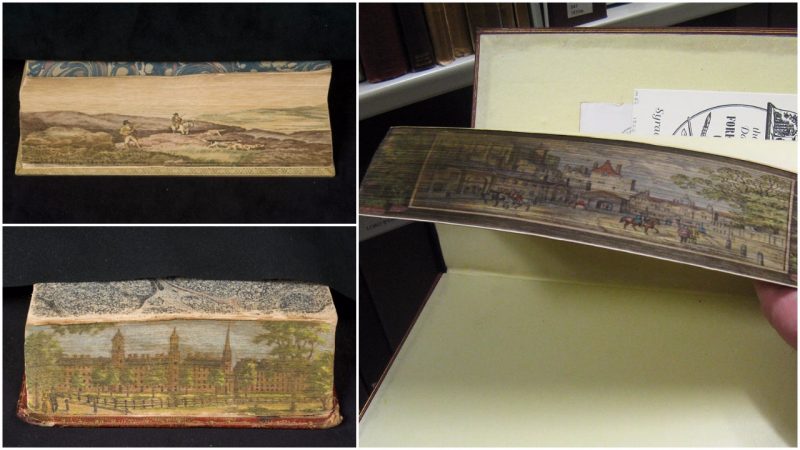Since the emergence of the book as a form of bound text, books have been associated not only with literature and science but with many different forms of art. Forms like book illustration and calligraphy flourished and were crucial for the creation of many new and unique styles and forms of art.
However, one form of painting remained forever bound to the book: it is known as fore-edge painting and was specifically created to enrich the visual appearance of books.
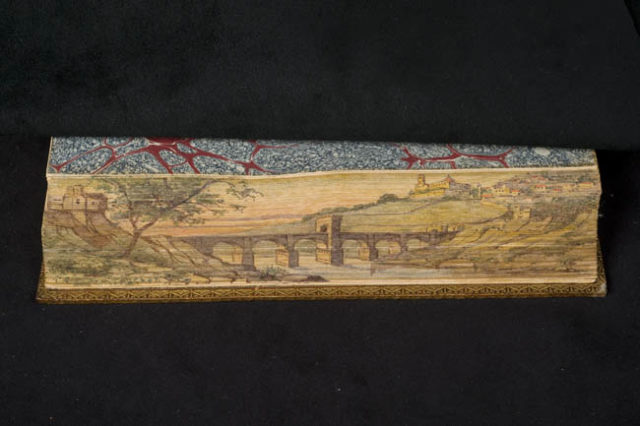
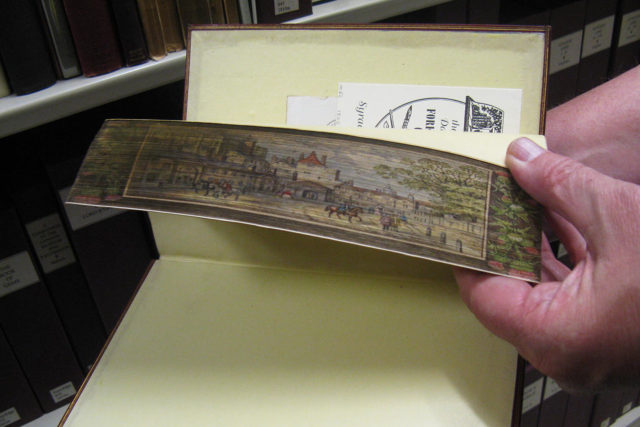

Fore-edge painting is the art of painting on the edges of the pages of a book. There are several different techniques: the most prominent one involves the artist painting the outer edges of the book so that the painting is visible only when the book is closed. Another technique, that features less frequently, is of the scenes painted on the outer edges of the pages inside the book, so paintings can be seen only when the book is open and the pages slightly folded.
The earliest fore-edge paintings from the 10th century consisted mostly of symbolic and floral designs, and in the 14th century, they represented heraldic symbols and were done in color. The big boom of fore-edge painting emerged in the early 18th century in England, when it was popularized by John Brindley, publisher and bookbinder to the Prince of Wales.
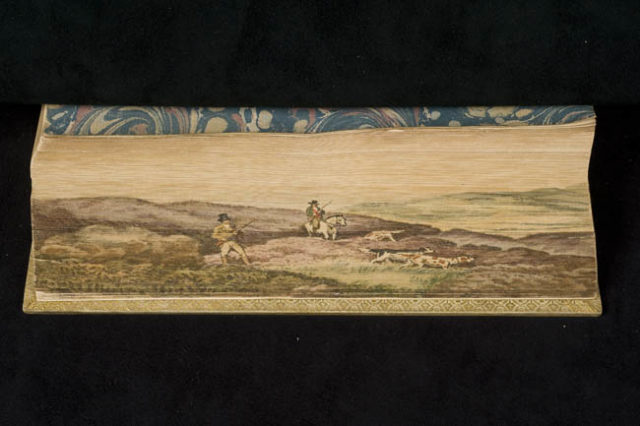

Since then, elaborate scenes on the outer edges of books became a trend in the publishing and bookbinding industry. The paintings first featured biblical scenes, landscapes, and illustrations of motifs from inside the book, but the themes soon became much more mundane, as reading evolved into a widespread form of entertainment.
In the 19th century, fore-edge paintings often featured scenes from the novels on which they appeared, but they also presented cheesy romantic slogans and vulgar and erotic depictions of sexual acts.

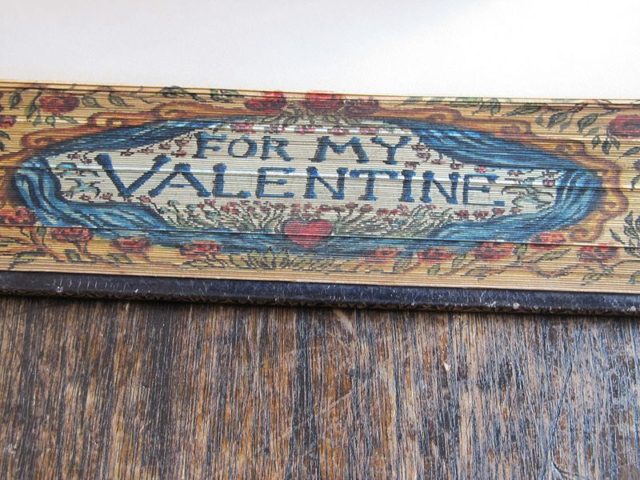
Thousands of fore-edge paintings have been made since the emergence of the technique, but nowadays there is no catalog that would list them and their authors.
Sadly, this intricate form of art is almost extinct, as almost no one in the world can make a living from reviving this beautiful tradition. The biggest collection of preserved fore-edge paintings is hosted in Virginia, by the Earl Gregg Swem Library of the College of William and Mary.
